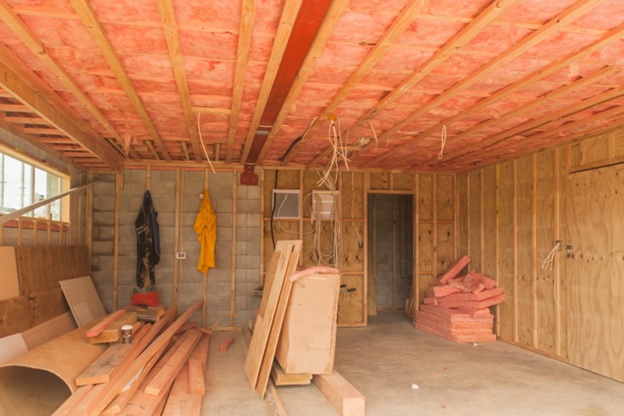If you want to save money year-round and keep everyone in your home comfortable, you need to know where to add insulation. Installing the wrong type in the wrong places can make your home HVAC system work harder, create drafts, and waste money.
It only takes a few minutes to calculate the R-value and learn where you need to insulate a home the most.
Read this guide to learn where to put home insulation that’s best for your home and budget.
Attics and Flat Ceilings
To properly insulate an attic or flat ceiling, start by measuring and cutting the material to fit tightly between the joists and fill any gaps with caulk or weather-stripping before installing the insulation. This can be achieved by blowing it in with an insulation blower or rolling it out in sheets.
It’s important to use the appropriate level of insulation for the specific space and take moisture into consideration. Insulation should also be added around any pipes, vents, and other objects. This should be done carefully, as all materials should fit tightly against them and eliminate any air gaps.
Floors and Crawl Spaces
If the crawl space is exposed to the outside air, insulation should be installed to further protect it from extreme temperature changes. If basement floors are exposed to the outside air, insulation should also be installed to mitigate the changing temperatures.
Insulating floors and crawl spaces can increase the energy efficiency of a home and make it much more comfortable year-round. It’s important to understand what type of insulation is best for the area and consult with a professional if there are any questions.
Ductwork
Insulation around ductwork helps reduce air leakage which can reduce air circulation. This leads to heating and cooling system malfunctions. Sealing cracks and gaps in the ductwork can help prevent air from escaping.
When selecting the type of insulation for use around ducts, fiberglass or mineral wool is often the best option. It is easy to install and offers high insulation value. Installing a vapor barrier around the insulated ducts can also help keep moist air from entering the home.
Interior Walls
Interior walls are a great place to install home insulation. You should use batt insulation, loose fill, or spray foam to insulate interior walls. Batt insulation is sold in precut lengths and widths, making it easy to install.
Loose-fill insulation, on the other hand, is the most affordable type of insulation. It’s usually made of fiberglass, cellulose insulation, or mineral wool and is blown into place. Spray foam insulation is an efficient way to fill small gaps and crevices around pipes and wiring.
Reap the Benefits of a Proper Installed Home Insulation
Home insulation is essential for lower energy costs, improved comfort all year round, and silent bedroom walls. Ensure your home is properly insulated by either tackling the job yourself or calling in a professional.
The additional cost of proper insulation is quickly recouped through energy savings and improved comfort. Take the time now to ensure you can enjoy the benefits of proper home insulation today and for years to come.
If you find this article helpful, make sure to browse our blog for more interesting reads.

